Aquaculture, or the farming of aquatic animals, is a rapidly growing industry that plays a critical role in meeting the global demand for seafood. However, maintaining optimal water quality is essential for the success of an aquaculture operation. Poor water quality can lead to disease, stress, and reduced growth rates in fish. In contrast, good water quality can support optimal health and growth.
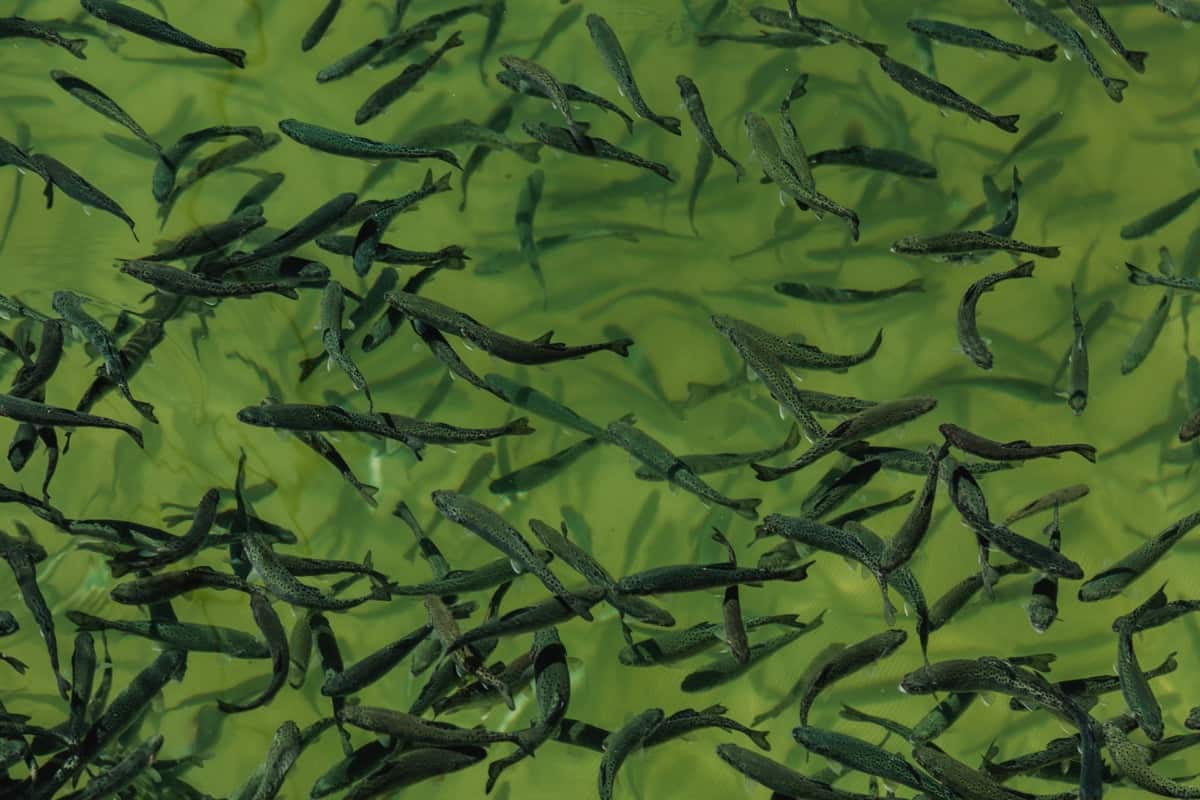
Poor water quality can lead to disease, stress, and reduced growth rates. Proper management of these factors is essential for maintaining optimal water quality and ensuring the success of an aquaculture operation. In this article, we guide you to explore the importance of water quality in aquaculture, the key parameters that must be monitored, and the management practices that can be implemented to ensure optimal water quality.
We will also discuss the effects of water quality on fish growth and the impact of poor water quality on an aquaculture operation’s overall health and productivity. By understanding the importance of water quality and implementing effective management practices, aquaculture operations can ensure the success and sustainability of their operations.
Key rules to maintain water quality in Aquaculture
What is Aquaculture?
Aquaculture is farming aquatic organisms such as fish, shellfish, and plants. It includes marine and freshwater species and can occur in natural or controlled environments. Aquaculture can be used to supplement wild populations or to produce food and other products. Some common examples include fish farms that raise species such as salmon or tilapia, shellfish farms that produce oysters or clams, and seaweed farms that grow kelp or other seaweed.
Aquaculture can also be used to restore endangered species or to support conservation efforts. In addition to providing food, aquaculture can also have other benefits, such as creating jobs and supporting local economies. However, aquaculture also has potential negative impacts, such as pollution, disease, and competition with wild populations for resources. Therefore, it is essential to carefully manage aquaculture operations to minimize these impacts and ensure sustainable practices.
In case you missed it: How to Balance Water pH in Aquaculture: Water pH Decreasing and Increasing Methods
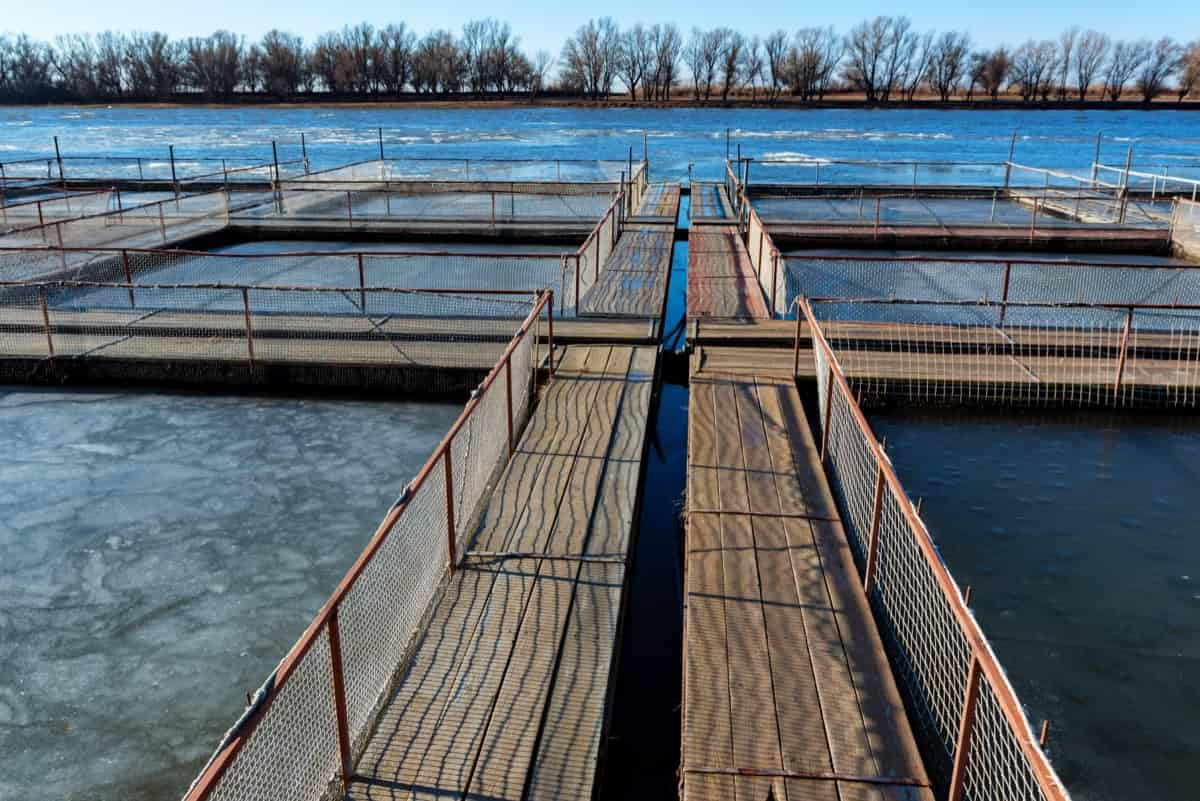
What is water quality in Aquaculture?
Water quality is a critical factor in the success of aquaculture, as it directly impacts the health and growth of aquatic animals. Parameters such as temperature, pH, dissolved oxygen, salinity, and pollutants or pathogens must be monitored and managed to ensure optimal water quality. Poor water quality can lead to disease, stress, and reduced growth rates in fish. In contrast, good water quality can support optimal health and growth.
Thus, aquafarmers must implement management practices that maintain good water quality, such as regular water testing, proper aeration, and filtration systems. Additionally, the effects of water quality on fish growth must also be considered, as poor water quality can lead to decreased fish size and weight, which can ultimately impact the overall productivity and profitability of the aquaculture operation.
Need of Aquaculture
- Food security: The world’s population is projected to grow, and demand for fish and seafood is expected to increase. Aquaculture can help meet this demand by sustainably producing more fish and seafood.
- Wild fish populations: Overfishing and other human activities have led to many wild fish populations declining. Aquaculture can help to supplement these populations and reduce pressure on wild fish stocks.
- Economic benefits: Aquaculture can create jobs and support local economies in coastal and rural communities.
- Conservation: Aquaculture can be used to restore endangered species and support conservation efforts.
- Climate change: The effects of climate change, such as rising water temperatures, make it more difficult for wild fish populations to survive in some areas. Aquaculture can help to mitigate these effects by providing a controlled environment for fish to grow.
- Diversify protein source: As the population grows, protein needs increase. Aquaculture can play a role in diversifying the protein source based on land-based animal farming.
Parameters for Aquaculture water quality
Water quality is a critical aspect of aquaculture, as the health and growth of aquatic organisms depend on the conditions of the water in which they are raised. Some of the key water quality parameters for aquaculture include:
- Temperature: The water temperature must be suitable for the species being raised. Fish and shellfish have different temperature requirements, and temperature variations can affect growth and survival.
- pH: The pH of the water should be within the range suitable for the species being raised. Most fish and shellfish require a pH between 6.5 and 9.0.
- Dissolved oxygen: Aquatic organisms need oxygen to survive, and the level of dissolved oxygen in the water should be within the range suitable for the species being raised.
- Salinity: The salinity of the water should be within the range suitable for the species being raised. Saltwater fish and shellfish require higher salinity levels than freshwater species.
- Ammonia: High ammonia levels can be toxic to fish and other aquatic organisms. Ammonia is produced as a waste product of fish metabolism, and it’s essential to monitor and control the ammonia levels in the water.
- Nitrite, Nitrate: Nitrite and nitrate are other waste products of fish metabolism, and high levels can harm aquatic organisms.
- Chlorine: Chlorine is a common disinfectant used in aquaculture but can also be toxic to fish and other aquatic organisms.
- Turbidity: High turbidity can interfere with the growth and survival of aquatic organisms by reducing the amount of light that can penetrate the water and also can cause stress on the fish.
- Algae: Algae can be beneficial for some aquaculture systems, but high levels of certain algae can harm aquatic organisms and reduce water quality.
- Heavy metals and other pollutants: Heavy metals and other pollutants can be toxic to aquatic organisms and should be avoided.
In case you missed it: Brackish Water Aquaculture, System, Benefits
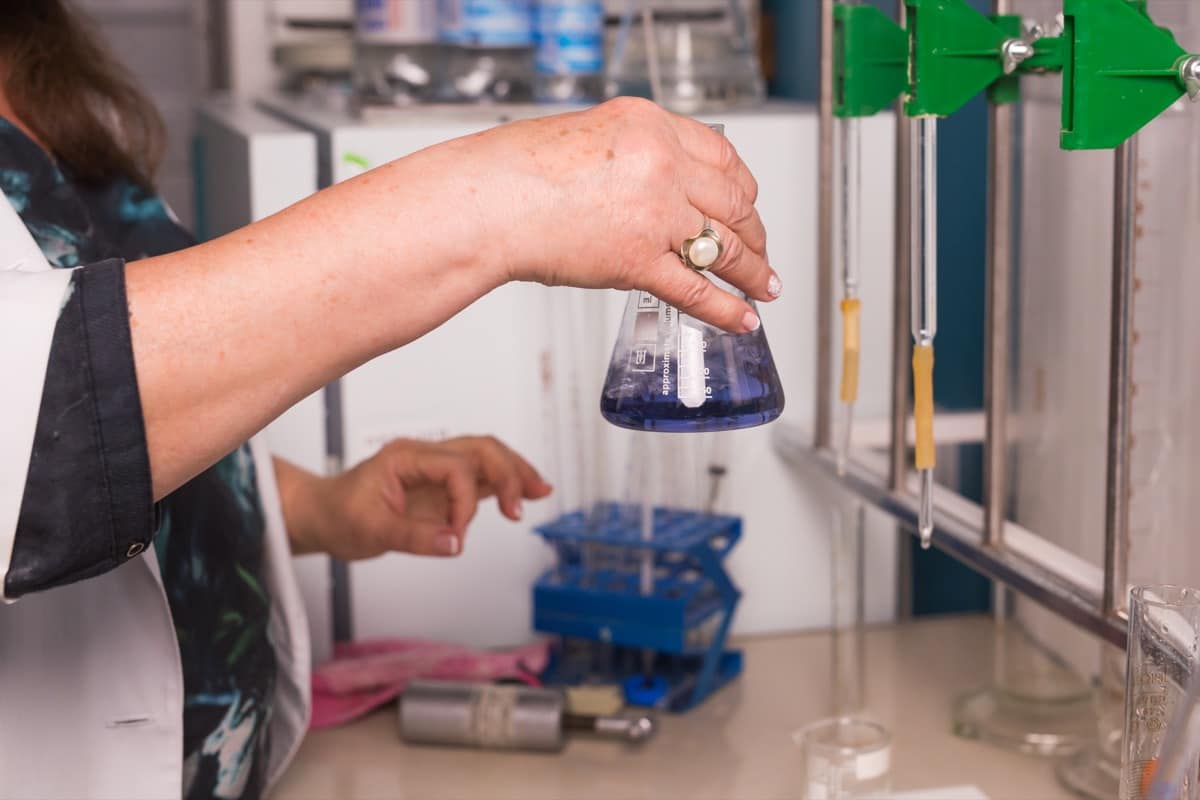
Water quality tolerance by different species
| Species | Temperature (°C) | pH | Dissolved Oxygen (mg/L) | Salinity (ppt) | Ammonia (mg/L) |
|---|---|---|---|---|---|
| Salmon | 4-20 | 6.5-8.5 | >5 | 0-35 | <0.5 |
| Tilapia | 20-32 | 6.5-9.0 | >5 | 0-40 | <0.5 |
| Shrimp | 20-35 | 6.5-8.5 | >5 | 10-40 | <0.5 |
| Catfish | 20-30 | 6.5-9.0 | >5 | 0-40 | <0.5 |
| Oyster | 10-20 | 7.5-9.0 | >5 | 0-40 | <0.5 |
| Clam | 10-20 | 7.5-9.0 | >5 | 0-40 | <0.5 |
Ideal management practices to control water quality in Aquaculture
- Regular monitoring: Water quality should be monitored regularly to ensure it is within the appropriate range for the species being raised. It measures temperature, pH, dissolved oxygen, salinity, ammonia, nitrite, nitrate, turbidity, algae, and heavy metals.
- Water exchange: Fresh water should be regularly added to the system to replace water lost through evaporation or uptake by the organisms. It helps to maintain the appropriate water quality parameters and prevent the buildup of harmful substances.
- Filtration: Filtration systems can be used to remove solid waste, uneaten feed, and other debris from the water. It helps to maintain water quality by reducing the amount of organic substance in the water, which can lead to the development of harmful bacteria and microorganisms.
- Aeration: Aeration systems can increase the water’s dissolved oxygen level. It is essential for the survival and growth of aquatic organisms. It can also help to prevent the buildup of harmful gases such as ammonia and carbon dioxide.
- Algae control: Algae can be beneficial for some aquaculture systems, but high levels of certain algae can harm aquatic organisms and reduce water quality. Algae can be controlled through chemical or biological methods or by reducing the amount of light penetrating the water.
- Disease management: Disease can significantly impact water quality and lead to the death of fish and other aquatic organisms. Disease management includes regular health check-ups, quarantine of new stock, and prompt treatment of diseased individuals.
- Feed management: Feed management is essential to water quality management, as uneaten feed can contribute to the buildup of harmful substances in the water. The feed should be provided in the appropriate amounts for the species and in the proper form, and uneaten feed should be removed from the water as soon as possible.
- Cleaning and maintenance: Regular cleaning and maintenance of the aquaculture system are essential to prevent the buildup of harmful substances and ensure that water quality remains optimal.
- Biofloc technology: This is a method of aquaculture that uses microorganisms to help purify the water. The microorganisms consume waste products, such as ammonia and nitrite, and convert them into less harmful substances. It can help to improve water quality and reduce the need for water exchange.
- Integrated Multi-Trophic Aquaculture (IMTA): This is a method of aquaculture that combines multiple species, such as fish, shellfish, and seaweed, in the same system. The different species interact in ways that can improve water quality, such as seaweed absorbing excess nutrients and shellfish filtering the water.
In case you missed it: How to Grow Herbs in Aquaponics: Best Fish and Herbs for Creating Your Sustainable Aquaponic Garden
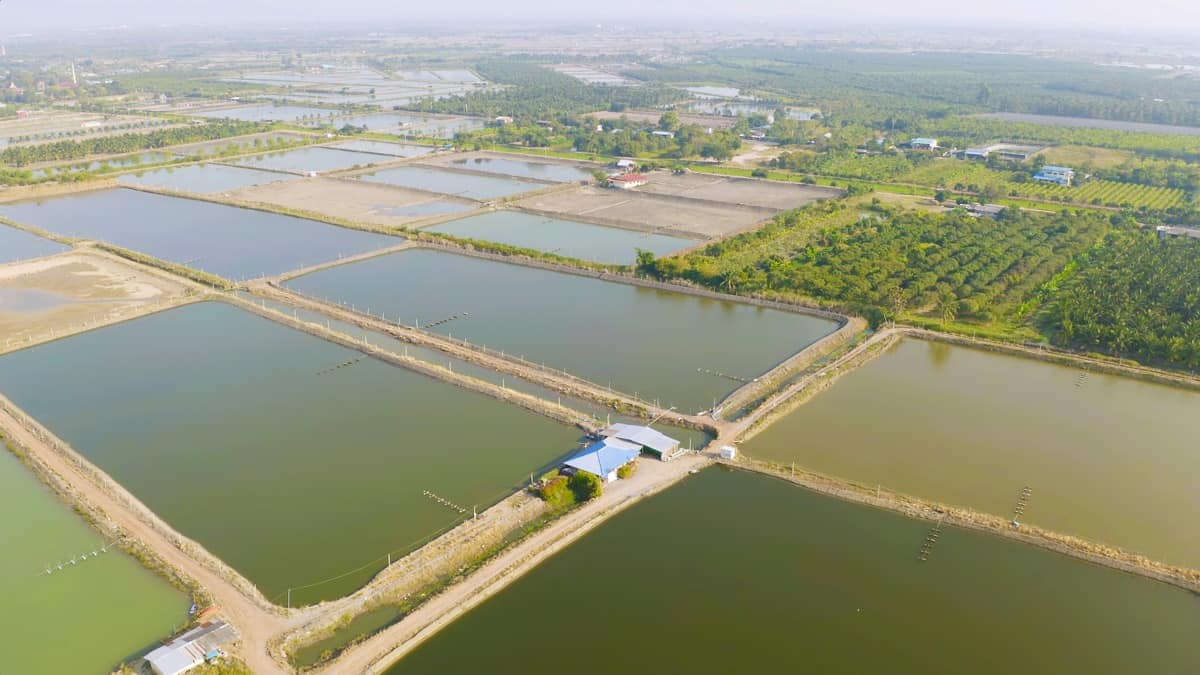
Equipment to measure parameters for Aquaculture water quality
There are various ways to measure the parameters for aquaculture water quality, some are simple, and some are more complex. Here is a brief explanation of some standard methods:
- Temperature: A thermometer can be used to measure the water temperature.
- pH: A pH meter or pH test strips can be used to measure the pH of the water.
- Dissolved oxygen: A dissolved oxygen meter or test kit can measure the amount of dissolved oxygen in the water.
- Salinity: A refractometer or conductivity meter can be used to measure the salinity nature of the water.
- Ammonia: Ammonia test kits can measure the amount of ammonia in the water.
- Nitrite and Nitrate: Test kits can measure the amount of nitrite and nitrate in the water.
- Turbidity: A turbidity meter can be used to measure the number of suspended particles in the water.
- Algae: Algae test kits can be used to measure the number/ Percentage of algae growth of algae in the water.
What causes dissolved oxygen levels in Aquaculture to fluctuate?
- Temperature: The dissolving capacity of oxygen in water decreases as temperature increases. Therefore, warmer water can hold less dissolved oxygen than cooler water. It means that dissolved oxygen levels will decrease when water temperature increases.
- Photosynthesis: Aquatic plants and algae produce oxygen through photosynthesis during the daytime, but consume oxygen during the night. It can cause dissolved oxygen levels to fluctuate depending on the time of day.
- Respiration: Fish, shellfish, and other aquatic organisms consume oxygen for respiration. The more organisms present in the system, the higher the oxygen demand will be, which can lead to lower dissolved oxygen levels.
- Biofiltration: Microorganisms that are used in biofiltration systems, such as in biofloc technology, consume oxygen during their metabolism, which can lead to lower dissolved oxygen levels.
- Organic matter: The decomposition of organic matter in the water, such as uneaten feed and fish waste, can consume oxygen and lead to lower dissolved oxygen levels.
- Weather conditions: Wind and waves can cause an increased oxygen exchange between the water surface and the atmosphere, leading to fluctuations in dissolved oxygen levels.
- Water flow: In closed systems, the water flow can affect the oxygen levels; low water flow can lead to lower dissolved oxygen levels, and high water flow can lead to higher dissolved oxygen levels.
Why does pH fluctuate in Aquaculture?
- Biological processes: Fish, shellfish, and other aquatic organisms produce waste products such as ammonia and carbon dioxide, which can lower the pH of the water. Microorganisms in the system can also produce acids that can lower the pH.
- Photosynthesis: Aquatic plants and algae produce oxygen during the daytime through photosynthesis, but during the night, they consume oxygen, which can cause a pH increase.
- Water flow: In closed systems, water flow can affect the pH levels; low water flow can lead to lower pH levels, and high water flow can lead to higher pH levels.
- Feeding: Fish feeds, specially formulated feed for aquaculture, can cause changes in pH; for example, feeds that contain high levels of calcium carbonate can raise the pH.
- Algae: Algae can consume carbon dioxide and release oxygen during photosynthesis, raising the pH.
In case you missed it: Key Rules to Improve Feed Conversion Ratio (FCR) in Goats: For More Profits in Goat Farming
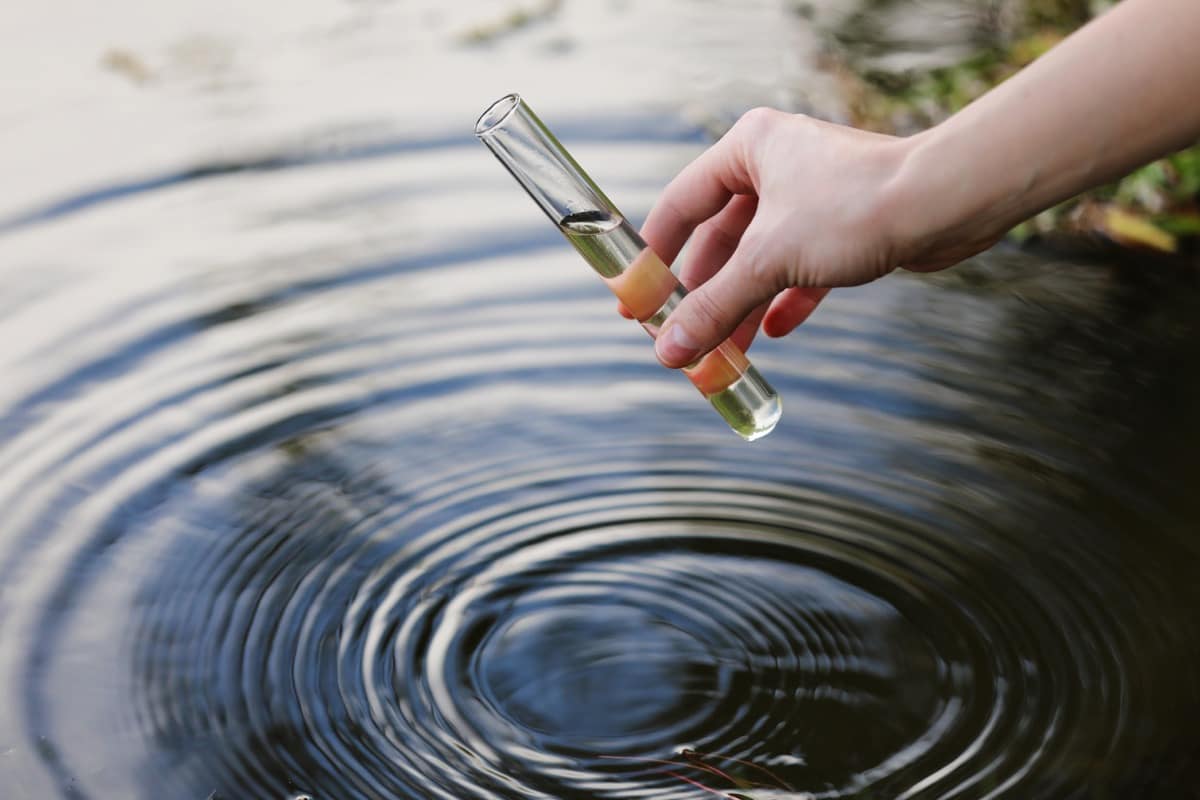
Effects of water quality on fish growth
Water quality plays a critical role in the growth and survival of fish in aquaculture. Poor water quality can have many adverse effects on fish growth, including:
- Stress: Poor water quality can cause stress in fish, negatively impacting growth and survival. Some factors, including high ammonia, low oxygen levels, and high water temperature, can cause stress.
- Disease: Poor water quality can also increase the risk of disease in fish. High levels of bacteria and other microorganisms can lead to infections and parasites, negatively impacting growth and survival.
- Feeding: Poor water quality can also affect fish feeding behavior and digestion. Fish may be less willing to feed and have a more challenging time digesting food in water that could be of better quality.
- Metabolism: Poor water quality can also affect fish metabolism, leading to reduced growth and survival. High toxins and pollutants can damage fish organs and affect their ability to process food and other nutrients.
- Reproduction: Poor water quality can also affect fish reproduction. High levels of pollutants and toxins can cause genetic damage and lead to a decline in fertility, which can negatively impact the growth of the population.
In case you missed it: How This Farmer Earned 5 Lakhs from Fish and Prawn Mixed Farming: A Success Story of an Aqua Farmer in India
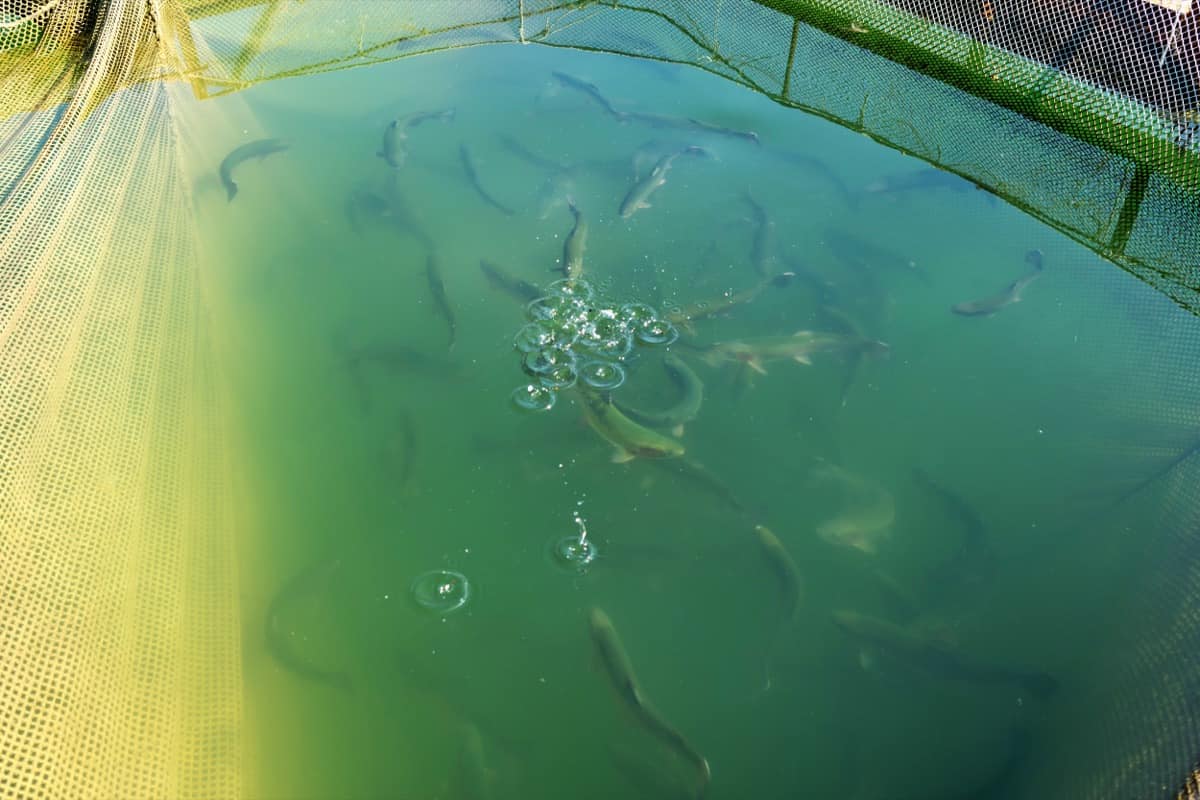
On the other hand, good water quality can promote fish growth; fish will be more active, feed more, and have better digestion, resulting in an increased growth rate. It is important to note that different fish species have different tolerance levels for water quality parameters. Therefore, it’s essential to identify the specific needs of the raised species and take steps to maintain water quality within those parameters.
- Types of Pesticides Used in Agriculture: A Beginner’s Guide
- Economical Aquaculture: A Guide to Low-Budget Fish Farming
- 15 Common Planting Errors That Can Doom Your Fruit Trees
- How to Make Houseplants Bushy: Effective Tips and Ideas
- Innovative Strategies for Boosting Coconut Pollination and Yield
- Pollination Strategies for Maximum Pumpkin Yield
- The Complete Guide to Chicken Fattening: Strategies for Maximum Growth
- Natural Solutions for Tulip Problems: 100% Effective Remedies for Leaf and Bulb-Related Issues
- Revolutionizing Citrus Preservation: Towards a Healthier, Greener Future
- Natural Solutions for Peony Leaf and Flower Problems: 100% Effective Remedies
- Maximizing Profits with Avocado Contract Farming in India: A Comprehensive Guide
- Natural Solutions for Hydrangea Problems: 100% Effective Remedies for Leaf and Flowers
- The Ultimate Guide to Choosing the Perfect Foliage Friend: Bringing Life Indoors
- From Sunlight to Sustainability: 15 Ways to Use Solar Technology in Agriculture
- The Ultimate Guide to Dong Tao Chicken: Exploring from History to Raising
- The Eco-Friendly Makeover: How to Convert Your Unused Swimming Pool into a Fish Pond
- Mastering the Art of Delaware Chicken Farming: Essentials for Healthy Backyard Flocks
- 20 Best Homemade Fertilizers for Money Plant: DIY Recipes and Application Methods
- How to Craft a Comprehensive Free-Range Chicken Farming Business Plan
- Brighten Your Flock: Raising Easter Egger Chickens for Beauty and Bounty
- How to Optimize Your Poultry Egg Farm Business Plan with These Strategies
- Subsidy for Spirulina Cultivation: How Indian Government Schemes Encouraging Spirulina Farmers
- Ultimate Guide to Raising Dominique Chickens: Breeding, Feeding, Egg-Production, and Care
- Mastering the Art of Raising Jersey Giant Chickens: Care, Feeding, and More
- Ultimate Guide to Raising Legbar Chickens: Breeding, Farming Practices, Diet, Egg-Production
- How to Raise Welsummer Chickens: A Comprehensive Guide for Beginners
- How to Protect Indoor Plants in Winter: A Comprehensive Guide
- Ultimate Guide to Grow Bag Gardening: Tips, Tricks, and Planting Ideas for Urban Gardeners
- Guide to Lotus Cultivation: How to Propagate, Plant, Grow, Care, Cost, and Profit
- Agriculture Drone Subsidy Scheme: Government Kisan Subsidy, License, and How to Apply Online
- Ultimate Guide to Raising Araucana Chickens: Breed Profile, Farming Economics, Diet, and Care
- Bringing Hydroponics to Classroom: Importance, Benefits of Learning for School Students
- Ultimate Guide to Raising Polish Chickens: Breed Profile, Farming Economics, Diet, and Care
- Ultimate Guide to Raising Australorp Chickens: Profile, Farming Economics, Egg Production, Diet, and Care
- Silkie Chicken Farming: Raising Practices, Varieties, Egg Production, Diet, and Care
- Sussex Chicken Farming: Raising Practices, Varieties, Egg Production, Diet and Care